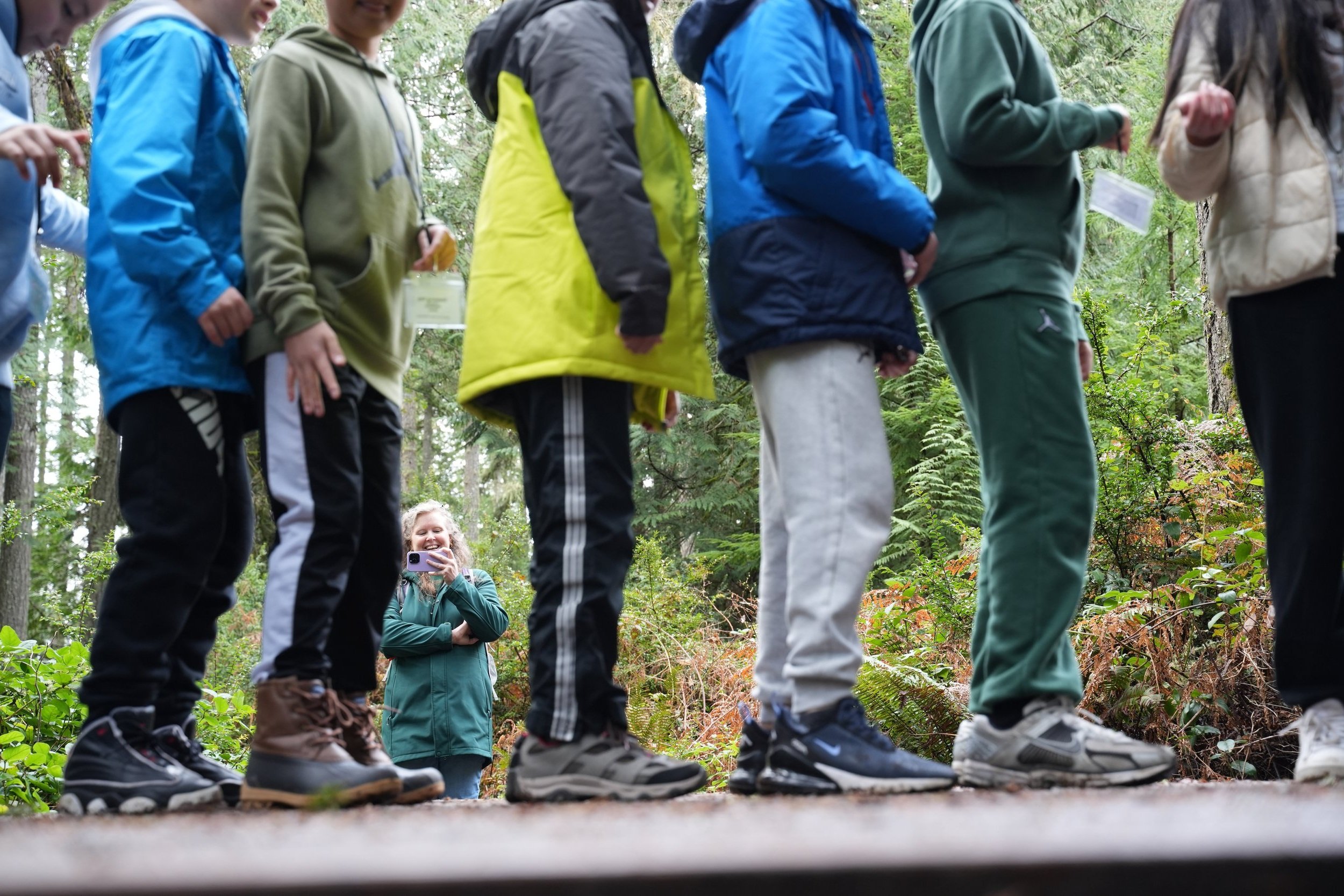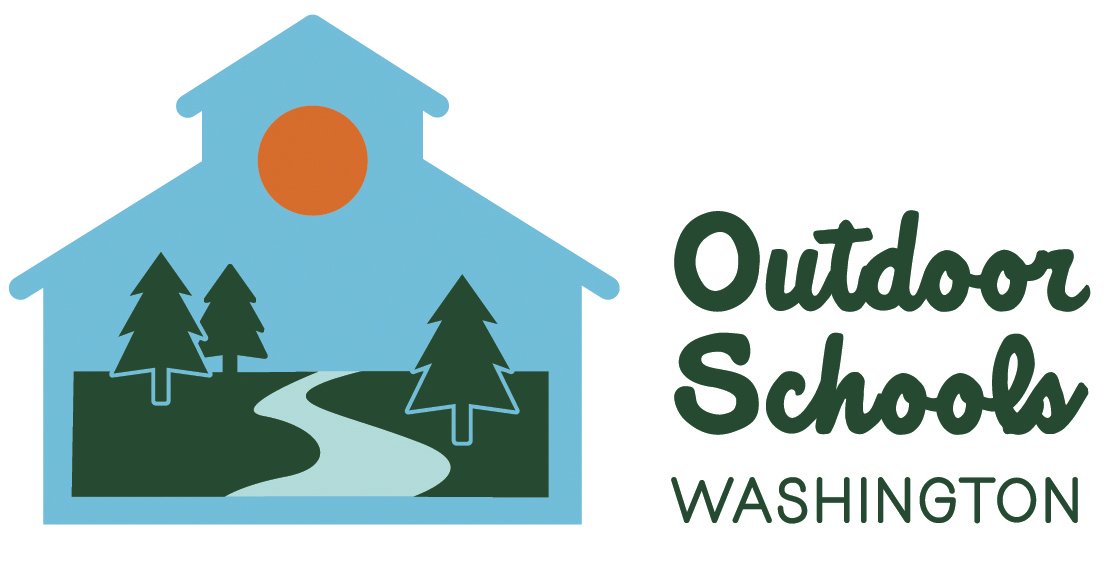
Outdoor Schools In Washington State
The First Outdoor School in the Nation
It is no surprise to learn outdoor schools originated in our corner of the nation. The first outdoor school in the United States was at Taneum Canyon, near Ellensburg, in 1939. In the 1940s and 1950s, outdoor education programs on the west side began in the Highline School District at Camp Waskowitz, in Snohomish County schools at Camp Silverton, and in Island County at the Northwest Environmental Education Consortium (NEEC) site on Whidbey Island. In Eastern Washington, the Omak School District established Camp Progress (now known as Camp Disautel). The first statewide teacher training for outdoor education took place in 1952 and was co-sponsored by Central Washington University and OSPI. During this era, many additional school districts established their own outdoor education programs, utilizing state parks and summer camp sites for their outdoor schools.
Cispus Learning Center
In 1969, State Education Superintendent Louis Bruno appointed William J. Hunter as the first Outdoor Environmental Education Supervisor in the United States. A few years later, OSPI acquired a former CCC/Job Corps site called Cispus, which continues to serve as an outdoor education and student leadership site in Randle, Washington.
Roadblocks and Disagreement
The next decades brought inconsistent results for outdoor education in Washington. No doubt, those in education and in the management of our state’s natural resources recognized the importance of an ecologically educated population. Committees formed to write goals and curriculum. Plans were made to bring environmental education into all classrooms in our state. While a significant number of people saw the benefits of outdoor education, the dream of a statewide plan hit roadblocks at every turn. Money and funding were always an issue. At one point, OSPI relinquished its ties with Cispus (and luckily, the Association of Washington School Principals picked it up). Environmental education was considered a controversial topic in some circles. There was a lack of outdoor school curriculum, training, and materials. The dream of environmentally literate students seemed to be fading.
Outdoor School Continues but with Inequities
Thanks to programs developed in school districts, some of Washington’s students continued to have outdoor school experiences. Going to outdoor school was considered an “extra” and in most situations, parents, teachers, and students took on the task of raising money for camp. This could only happen in communities with disposable income, so the opportunity to go to outdoor school quickly became an issue of inequity. Concerns around risk management and then poor economic times were the final blow to existing outdoor education programs at the state level and in many districts. And while a mandate was added (Pursuant to RCW 28A.230.020 instruction about conservation, natural resources, and the environment shall be provided at all grade levels in an interdisciplinary manner through science, the social studies, the humanities, and other appropriate areas with an emphasis on solving the problems of human adaptation to the environment) that made environmental education a part of all Washington students’ education, this expectation has yet to fully materialize.
Traditions run deep. There are districts in Washington where outdoor school experiences continue to thrive, particularly in places where outdoor school is considered a rite of passage or a strong part of school culture. But as mentioned above, this experience is limited to the students whose families and communities have the financial means to support this “extra” activity.
Outdoor School During a Pandemic
Fast forward to current day. We lived through a pandemic that impacted the mental health of our citizens, especially the youngest among us. Today’s children are spending less time playing outside than previous generations. We are at a critical moment in the health of our planet and the depletion of our resources. An antidote for these situations is simple: time in the out-of-doors. Time in nature increases mental well-being. Time in nature leads to creative play that engages imaginations and teaches important life lessons. Time in nature creates an affinity for the out-of-doors and a connection that leads toward the desire to respect and conserve. Time in nature enhances learning, making core academics in school come to life through hands-on experiences. Time in nature introduces young people to jobs they might train or study for in education or in the environment. If a week in nature can provide these opportunities and more, shouldn’t outdoor school be a priority for ALL students in Washington?
Outdoor School for ALL Takes Hold
That’s where Outdoor Schools Washington comes in. Established in 2021 with generous initial funding from OSPI and bipartisan support from lawmakers and the governor, our long-term goal is to make sure EVERY 5th or 6th grader in our state has a residential outdoor school experience. We plan to follow in the footsteps of our friends to the south, where Outdoor School for All was established and fully funded in Oregon. When Washington fully funds outdoor schools, this experience will no longer be available only to those who can afford it. At Outdoor Schools Washington, we believe all means ALL.
Continuing and Improving on a Washington Tradition
We take this charge to revitalize outdoor schools in Washington seriously. We pursue this work to honor our Indigenous Family, who have cared and continue to care for the lands and waters since time immemorial. We pursue this work to honor the progressive movers and shakers of the 20th century, who saw outdoor schools for what they are: a vital experience for all children of Washington. We pursue this work to honor our state (our home!), so Washington may remain the most beautiful place in the world. Finally, we pursue this work to honor our children. May our collective decisions and actions demonstrate Washington State’s deep devotion to their future lives and well-being.
Why is outdoor school so important?

